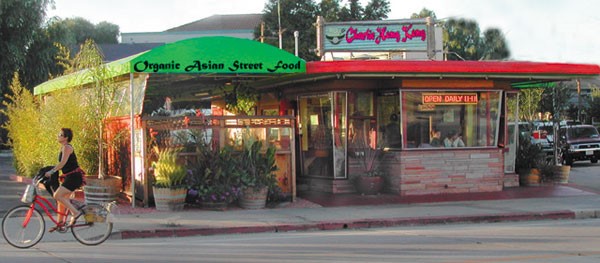
To Bring In Business, Start Paying Attention
The single best way to improve your business development expertise is not to read articles like this. It’s to pay close attention to what the best business developers around you do, then steal from them.
Right down my street, in Santa Cruz, California, is a little joint called Charlie Hong Kong, or CHK as it’s known in my neighborhood. CHK sells what they describe as “Asian Street Food” – noodle bowls, rice bowls and so on. It’s housed in a crummy-looking building, without a lot of parking. And it’s always packed. And it makes a LOT of money. If you simply paid attention to what CHK does, you can instantly get a really quick, effective lesson in EXACTLY how to run a very profitable, efficient fast food restaurant.
One of the first time I ever was in CHK, the owner, Rudy, was standing by the front door with a stopwatch, timing how long it took customers to get through the line. That impressed me, and we talked for quite a while. It turns out Rudy had spent many years as an operations executive for Einstein’s Bagels, and knew everything about how to actually operate a fast food restaurant. A few examples:
- CHK is fast – you never have to wait more than a few minutes for your food.
- They know their market. They also sell beer, and nothing costs over ten bucks, which makes sense in a town full of artists and college students.
- They pay their people relatively well. I happen to know that all of the employees are paid considerably above market wage for this area, and I think they have health insurance, too. Lack of employee turnover is the result, which is a huge competitive advantage. The people at CHK are smart, and nice. The Taco Bell down the street is a direct competitor, and their counter people are, to put it politely, somewhat substandard by comparison.
- CHK does a huge takeout business, which they’ve optimized by setting up a separate order-taking system for busy times. This shortens lines, and allows them to capture all that revenue.
- The food itself is very simple, uses organic ingredients, and is good. Nothing tricky, or complex. It’s easy to make.
- They don’t waste a lot of money on décor or design. Their market doesn’t need it, and funkiness is actually a benefit.
- It’s very family-friendly, which makes it the perfect place to get a fast dinner if you’ve got a bunch of little kids. This opens up a second market segment at zero cost.
The point here, unless you’re considering bailing out of your job and starting a restaurant, is that getting good at bringing in business requires, more than anything else, paying attention. There are people all around you who are excelling at what you’re trying to learn. Start paying close attention to how they do it. What are they doing?
Some of this you can learn by watching. Some of it you can ask about – one of my clients, a partner at a big firm in Los Angeles, would be delighted to tell you all about what he does. He wants to get better, and he wants everyone else to get better, too. There are lots of people like him who are happy to share.
And it’s not always the big stuff. It’s also the little details. For instance, to return to CHK again, people who eat in sit at picnic tables, which are covered in this thick, brightly patterned plastic-covered cloth. It’s cool-looking, it’s really cheap, and the staff can wipe it down in seconds when needed. The equivalent would be a lawyer who sends handwritten notes to contacts and prospects. It’s unique, it’s personal, it’s effective and it’s memorable. You could do it, too. 50 note cards, with your firm’s logo on the back, and envelopes, costs just over $20.
Pablo Picasso is said to have said that “Good artists borrow, great artists steal.” The same is true for business development.
